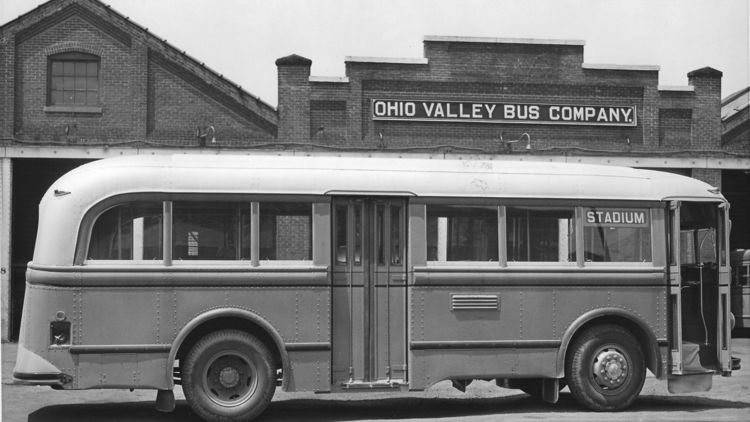HUNTINGTON -- On Oct. 1, 1971, drivers and mechanics at the Ohio Valley Bus
Co. went on strike.
Nobody expected a quick settlement, but few expected the
strike to drag on for nine months
and end only after creation of a new
public agency which took over local bus service.
In 1937, what had been the Ohio Valley Electric Railway Co. junked its last
streetcars and became
Ohio Valley Bus. By the early 1950s, the company was
operating a fleet of 80 buses on more than
a dozen routes in the Huntington
area, including adjacent parts of Kentucky and Ohio.
But Ohio Valley was already beginning to encounter the financial problems
that ultimately would spell its demise.
In a 1954 newspaper interview,
Leonard Samworth, the company's president and general manager, complained
that as more and more people bought automobiles the company's ridership had
declined
more than 50 percent over the past five years.
Steep ridership declines continued throughout the 1950s and '60s,
and the
company found it tougher and tougher to operate at a profit.
The company's employees, too, were having a tough time, and so when their
union contract expired in 1971,
the drivers and mechanics went on strike,
demanding improved wages and benefits. As the marathon strike
dragged on, it
became clear this wasn't just another work stoppage but truly a day of
reckoning for local transit -
one that heralded a change every bit as
fundamental as that when the streetcars of yesteryear gave way to buses.
It was a change by no means unique to Huntington. The 1960s and '70s saw
privately owned bus companies all across
the nation come to the end of the
line. Squeezed by increasing costs and declining ridership, the companies
could no
longer turn a profit for their owners. With private bus companies
across the nation calling it quits, many communities
turned to public -
i.e., tax-supported - transit systems. Thus it was that a group of concerned
citizens
hatched the idea for what in 1972 would become the Tri-State
Transit Authority (TTA).
